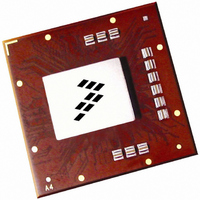MPC8560PX833LC Freescale Semiconductor, MPC8560PX833LC Datasheet - Page 90

MPC8560PX833LC
Manufacturer Part Number
MPC8560PX833LC
Description
IC MPU PWRQUICC III 783-FCPBGA
Manufacturer
Freescale Semiconductor
Datasheet
1.MPC8560PX833LC.pdf
(104 pages)
Specifications of MPC8560PX833LC
Processor Type
MPC85xx PowerQUICC III 32-Bit
Speed
833MHz
Voltage
1.2V
Mounting Type
Surface Mount
Package / Case
783-FCPBGA
Family Name
MPC85XX
Device Core
PowerQUICC III
Device Core Size
32b
Frequency (max)
833MHz
Instruction Set Architecture
RISC
Supply Voltage 1 (typ)
1.2V
Operating Supply Voltage (max)
1.26V
Operating Supply Voltage (min)
1.14V
Operating Temp Range
0C to 105C
Operating Temperature Classification
Commercial
Mounting
Surface Mount
Pin Count
783
Package Type
FCBGA
For Use With
MPC8560ADS-BGA - BOARD APPLICATION DEV 8560
Lead Free Status / RoHS Status
Contains lead / RoHS non-compliant
Features
-
Lead Free Status / Rohs Status
Not Compliant
Available stocks
Company
Part Number
Manufacturer
Quantity
Price
Company:
Part Number:
MPC8560PX833LC
Manufacturer:
MOTOROLA
Quantity:
453
Company:
Part Number:
MPC8560PX833LC
Manufacturer:
Freescale Semiconductor
Quantity:
10 000
Part Number:
MPC8560PX833LC
Manufacturer:
FREESCALE
Quantity:
20 000
Thermal
Figure 57. Exploded Views (2) of a Heat Sink Attachment using a Plastic Fence
The die junction-to-ambient and the heat sink-to-ambient thermal resistances are common figure-of-merits
used for comparing the thermal performance of various microelectronic packaging technologies, one
should exercise caution when only using this metric in determining thermal management because no single
parameter can adequately describe three-dimensional heat flow. The final die-junction operating
temperature is not only a function of the component-level thermal resistance, but the system level design
and its operating conditions. In addition to the component’s power consumption, a number of factors affect
the final operating die-junction temperature: airflow, board population (local heat flux of adjacent
components), system air temperature rise, altitude, etc.
Due to the complexity and the many variations of system-level boundary conditions for today’s
microelectronic equipment, the combined effects of the heat transfer mechanisms (radiation convection
and conduction) may vary widely. For these reasons, we recommend using conjugate heat transfer models
for the boards, as well as, system-level designs.
MPC8560 Integrated Processor Hardware Specifications, Rev. 5
90
Freescale Semiconductor











